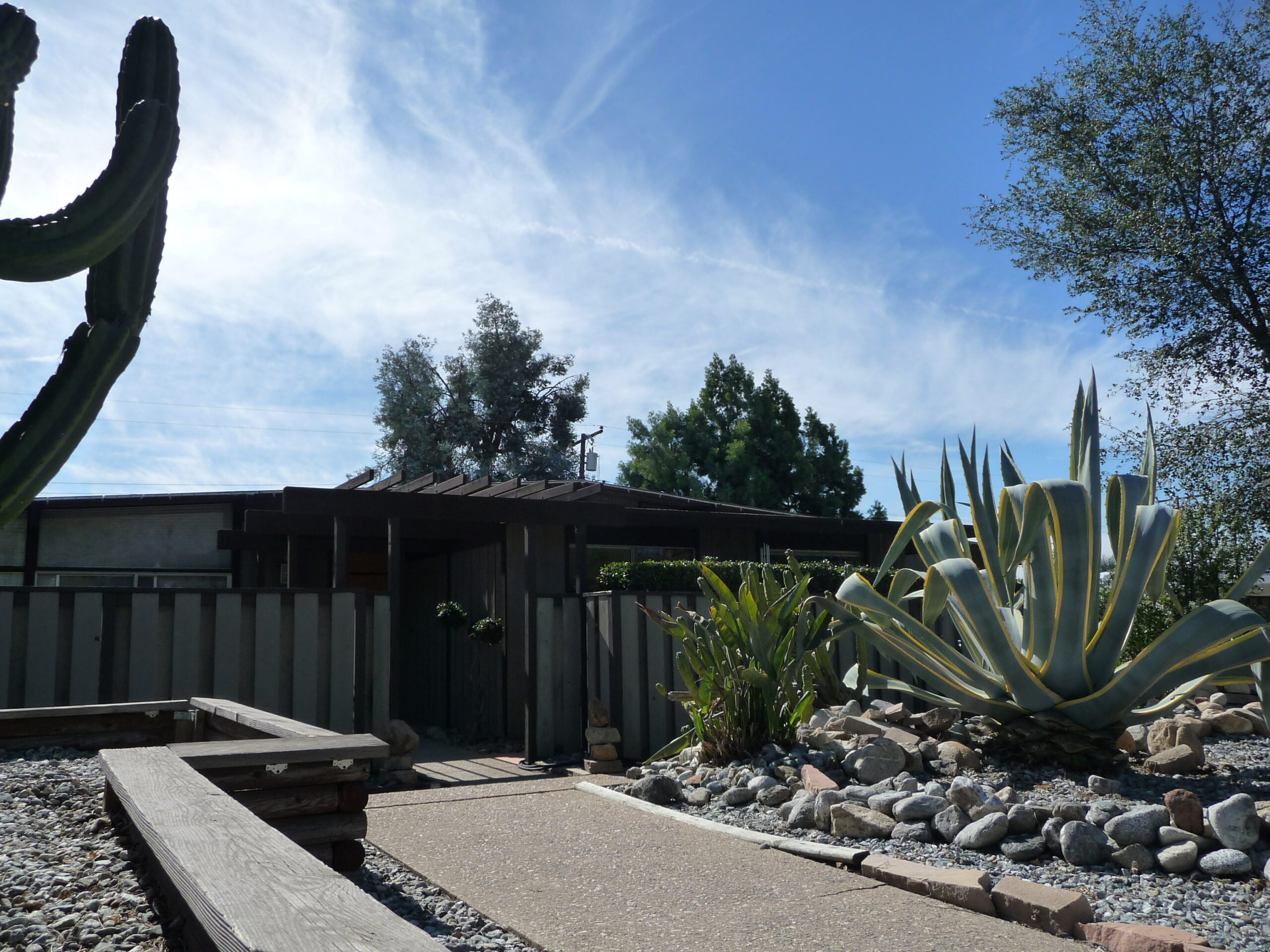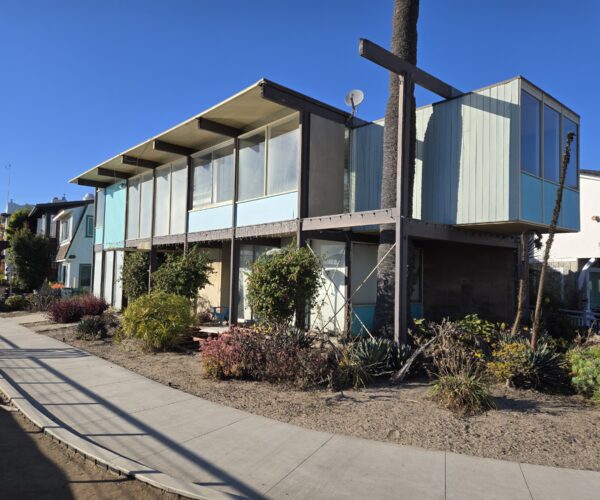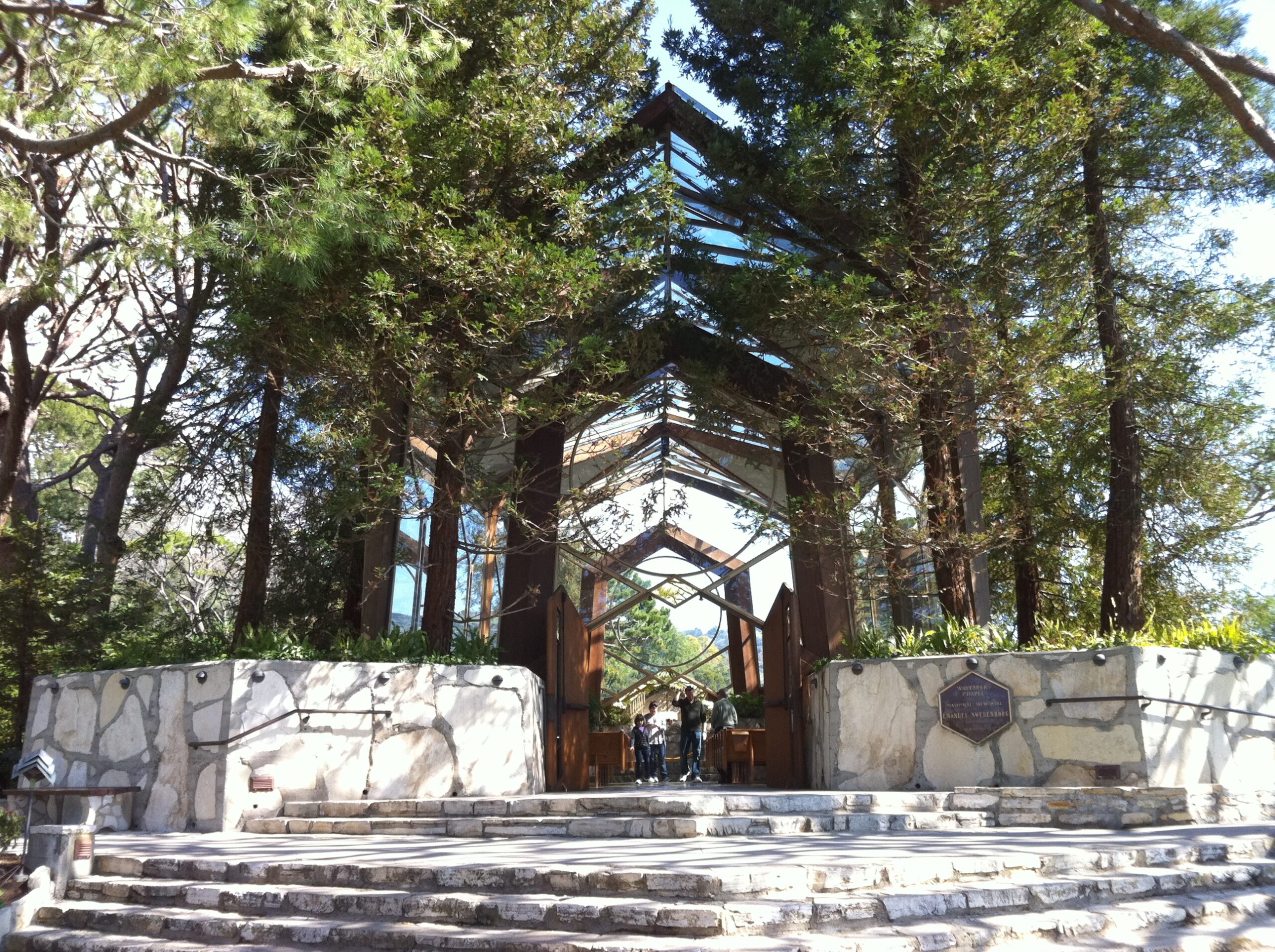
Place
Eldridge House
An elegant example of Claremont Modernism, the Eldridge House was a clear outcropping of the architect's abiding principle of "total environment."
Place Details
Address
Get directions
Architects
Year
Style
Decade
Property Type
Community
Claremont has several wonderful neighborhoods of Mid-Century Modern residential design, one of which is centered on Blaisdell Drive. Among the fine examples in the area is the Eldridge House, designed by celebrated Claremont architects Theodore Criley and Fred McDowell. It was completed in 1963 for the Eldridge family.
The low, one-story house illustrates a strong regional response to the post-and-beam style, featuring exposed wooden framing, expanses of glass, and a relaxed open-plan interior.
It has a low-pitched gabled roof and a front entry shaded by a rustic wood pergola. Criley and McDowell’s building is consciously integrated into a designed landscape, part of which is screened from the street by a wood fence, and is meant to incorporate outdoor areas into the experience of living indoors. The house’s irregular plan also wraps around a landscaped patio in the back, making it in effect an additional living space. McDowell explained the importance of this idea in the Los Angeles Times in 1963, stating: “Total environment occurs when earth and dwelling merge into a recognizable whole where terrain, floor plan, exterior design, building materials and landscaping work consciously together.” The Eldridge House illustrates this philosophy of “total environment,” and is an elegant example of Claremont Modernism.


